#bealtaine
Text
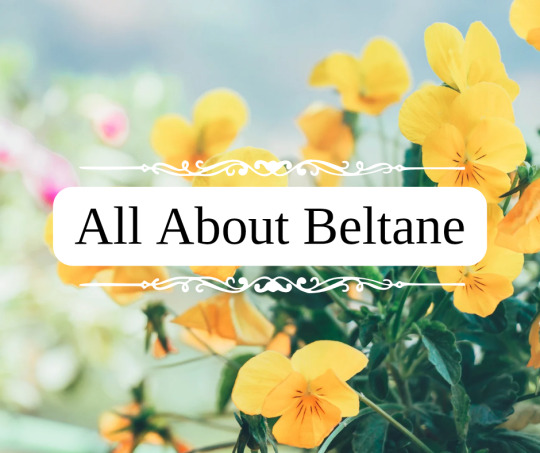
All About Beltane
Beltane, also known as Bealtaine in Irish, is a Gaelic holiday traditionally held on May 1st or the halfway point between the spring equinox and the summer solstice. It is believed to be named after the Celtic sun god Belenus. It was widely observed in Ireland, Scotland, and the Isle Of Man, and is one of the 4 major Celtic fire festivals. It is mentioned in even the earliest Irish literature and marked the beginning of summer and used as the marker to drive cattle into their summer pastures. Although public celebrations have mostly fallen out after the 20th century and many traditions have been mixed with other cultural holidays (such as the Roman holiday May Day), many Celtic Neopagans and Wiccans still celebrate, and many local traditions still continue, causing it to now get a cultural revival.
Traditionally, rituals were held to protect the livestock that moved pastures, along with crops, dairy products, and people, and to encourage growth. It was also important to appease the Aos Sí, or nature spirits/fairies, which were believed to be more active then.
According to early medieval texts in 908, druids would make two bonfires and drive cattle between them to protect them from disease. In the 18th and 19th centuries, bonfires continued to be an important part of the celebrations. Before the bonfires were lit, all hearth fires were put out, and then relit using the fire from the Beltane bonfires after the celebration.
Continuing into the 19th century, cattle were still driven over or between flames, or sometimes around the fires or made to leap over. The people themselves did as well for good luck and protection. Once the fires died down, people would dab themselves with the ashes and sprinkle them over their crops and livestock. Torches from the bonfires would also be brought home and carried around the home or boundaries, and also used to relight the hearth.
Food was also an important part of the Beltane festival, and usually included a feast of lamb, which, historically, was sacrificed. In 1769, it was written that a hot drink, called a caudle, made of eggs, butter, oatmeal, and milk was served, along with tossing a bit on the ground as an offering. A Beltane Bannock, a type of oatmeal cake, was also written to be important and had a few traditions around it.
In one tradition, the Beltane Bannock had nine knobs on it and each person would take the bannock and face the fire, proceeding to break off the knobs of bannock one at a time and tossing them behind their shoulder as an offering to the spirits for protection over their livestock and from predators (one for the cow, one for the sheep, one for the fox, etc). Afterwards, they would drink the caudle.
According to other 18th century writers, there was another Beltane Bannock tradition where the bannock would be cut into slices and one was marked with charcoal. The slices were then thrown into a bonnet and everyone would take one out while blindfolded. According to one writer, whoever pulled the marked bannock slice had to leap through the fire 3 times. According to another, the person would instead be pretend-thrown into the fire and for some time afterward people would talk about the person as if they were dead. This may have always been symbolic, or it may have been a tradition from a time where actual human sacrifice was used. This tradition was also near identical to May Day traditions that occurred in Wales and other parts of Europe, however.
Other traditions including flowers and plants were also observed, especially ones that evoked fire. Documents from the 19th century cite that yellow and white flowers, such as primrose, rowan, hawthorn, gorse, hazel, and marsh marigold was used and placed at doorways and windows. Sometimes they were strewn into garland, and other times they were made into bouquets, made into crosses, or fastened to them. They were also fastened to cows and milking/butter equipment.
Decorating a May Bush or May Bough was also a widespread tradition, and it usually consisted of a small tree or branch (typically hawthorn, rowan, holly, or sycamore) decorated with bright flowers, ribbons, candles, painted shells or egg shells from Easter, and more. In some traditions they also decorated it with gold and silver May Balls, which were hurling balls, that were then either given out to children or gifted to winners of a hurling match. It was also known as the only acceptable time to cut a thorn tree, as they were associated with fairies and may have also been a relic of worshipping tree spirits. It would either be decorated where it grew, or branches hung over windows, doors, roofs, and barns either inside or outside. Traditionally, it was the responsibility of the eldest of the house to decorate it.
The tree was usually left up until May 31st, but in some traditions it would be burned in the festival bonfire after singing and dancing around it. In Dublin and Belfast, May Bushes were brought into town and decorated by the whole neighborhood, with each neighborhood competing for the most beautiful bush. These competitions could also lead to neighborhoods attempting to steal others May Bushes, which eventually led to the May Bush being outlawed in Victorian times.
Appeasing the fairies was also a big part in Beltane celebrations, with many traditions revolving around offerings to the fairies and also warding them off, as there were many fears around them stealing dairy. One protection tradition was to leave 3 black coals under the butter churn. Another was to hang May Boughs on the milk pails. And yet another was to hang cattle tails in the barns. Flowers were also used to decorate the cattle's horns for good luck.
Farmers would also lead a procession around the boundaries of the farm and would "carry with them seeds of grain, implements of husbandry, the first well water, and the herb vervain (or rowan)", stopping at the four cardinal points of direction starting at the east, and performing rituals towards each direction at each stop. These processions were said to bring protection of their farm produce and encourage fertility. Some people also made the sign of the cross using milk on the backside of cattle for good luck.
As for fairy offerings, one tradition was to pour milk or leave food at places associated with the fairies such as "fairy trees". In Ireland, cattle were brought to "fairy forts" where a small amount of their blood was poured into the earth with prayers of the herd's safety. Sometimes, the blood would be left to dry and then be burnt.
Visiting holy wells was also a popular way to celebrate Beltane. Visitors would walk sunwise, moving from east to west, around the well while praying for health. They would then leave offerings of coins or cloth. The first water drawn from the well on Beltane was thought to be especially potent, and would bring good luck to the person who drew it.
Morning dew on Beltane was also thought to bring goodluck and health, and maidens would wash their face with it or roll in it at dawn or before sunrise on Beltane. It was also collected in a jar, left in sunlight, and then filtered. The dew was said to increase sexual attractiveness, maintain youthfulness, protect from sun damage, and ensure skin health during the ensuing year.
Modern day celebrations may vary from these more traditional festival activities, but many choose to incorporate or take inspiration from the traditions at least. Popular traditions still revolve around bonfires, feasts, decorating a May Bush, and focusing on protection and growth.
Beltane Associations
Colors - yellow, white, red, green
Food - lamb, milk and dairy, beef, bannocks, caudle, cakes
Animals - cattle, sheep, other herd animals
Items - primrose, rowan, hawthorn, gorse, hazel, marsh marigold, holly, sycamore, yellow and white flowers, flower garland, greenery, morning dew, dairy products
Crystals - citrine, fire agate, fire opal, carnelian, red and yellow jasper
Other - protection, fertility, good luck, fire, smoke, ash, sun, bonfires, farming
Ways To Celebrate
light a bonfire
jump over or dance around a bonfire
decorate a May Bush or May Bough
craft and hang flower garland
bake Beltane Bannocks
collect morning dew
create some caudle
ward and protect your home or property
leave offerings for the fairies
focus on protection, growth, and luck magic
enjoy time in the sun
have a feast
create a bouquet out of yellow and white flowers
visit a farm or petting zoo
#beltane#beltaine#bealtaine#celtic#gaelic#irish#scottish#pagan#witch#witchy#wicca#may day#magick#magic#magickal#grimoire#tradition#celebrate#bonfire#fire festival#witchcraft#spiritual#witchblr#witch community#paganism#pagan witch#celtic paganism#paganblr#about#dairy
24 notes
·
View notes
Text

happy beltane & may day! 🌿
#my art#artists on tumblr#illustration#art#beltane#bealtaine#folk art#procreate#cottagecore#maypole#may day#quilt borders#goat
11K notes
·
View notes
Text


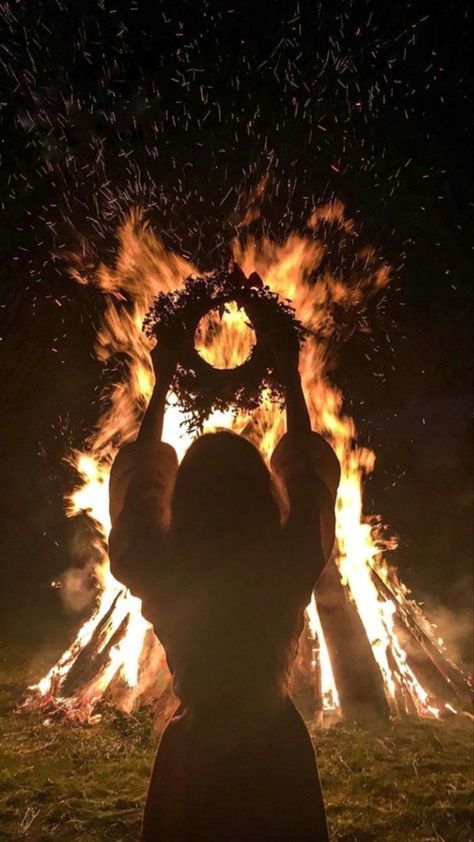



Beltane (May 1st) is almost here, we celebrate spring being at its peak and everything around us being in bloom.
The sun is shining bright again, and the days are now longer.
Beltane correspondences:
Symbols | bonfire, lots of candles, sun, flowers and flower crowns, maypoles, colored ribbons
Colors | yellow, white, green, pink, reds
Spells | fertility, love, cleansing, spellss for creativity and beauty
Crystals | rose quartz, carnelian, jasper
Herbs and flowers | tulips, violets, mint, rosemary
Foods to make | salad, cake or pie, dishes with honey, breads, nuts
How to celebrate | Light a bonfire, go out in nature, make love, dancing, make a maypole
#bealtaine#beltane#mayday#witchy#witchy things#witchyvibes#witches#witch#whimsigoth#whimsigothic#witchythings#moon#whimsical#witchcraft#witch aesthetic#witch community#witchcraft community#witches of tumblr#magick#pagan#spring#wheel of the year#maypole
2K notes
·
View notes
Text
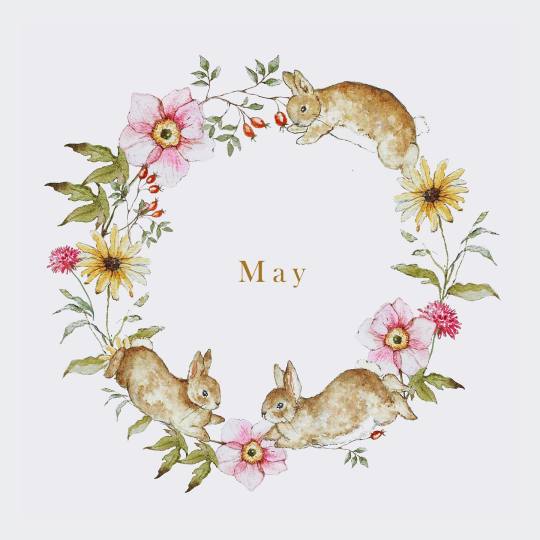
by Jane Carkill
722 notes
·
View notes
Text
Blackcrowing's Irish Pagan Festivals Master Post
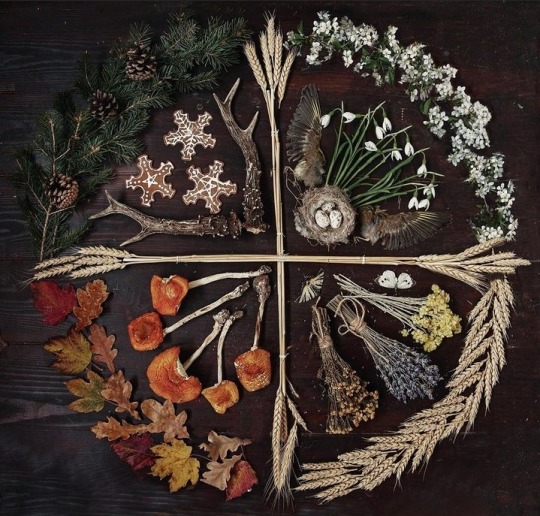
Samhain Festival
Samhain Authentic Foods
Imbolg Festival
Imbolg Authentic Foods
Bealtine Festival
Bealtine Authentic Foods
Lughnasadh Festival
Lughnasadh Authentic Foods
Art Credit - Familiar_flower
#lughnasa#lúnasa#lughnasadh#bealtaine#Baltaine#Beltane#imbolg#imbolc#fire festivals#fire festival#irish#irish mythology#irish polytheist#irish polytheism#irish pagan#irish paganism#irish reconstructionism#irish reconstructionist#celtic#celtic mythology#celtic pagan#celtic paganism#celtic polytheist#celtic polytheism#celtic reconstructionist#celtic reconstructionism#blackcrowing#samhain#pagan#paganism
153 notes
·
View notes
Text
Protecting home and fortune: Irish folk customs for Bealtaine
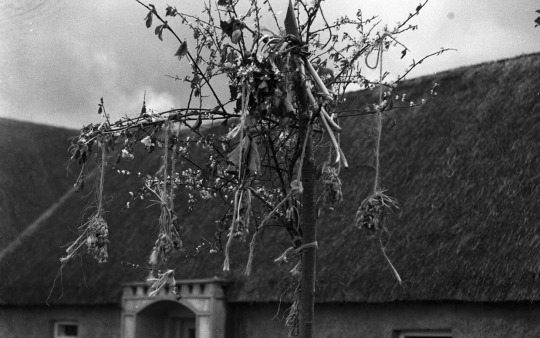
Bealtaine, also known as May Day, marked a pivotal point in the Irish calendar. It signified the arrival of summer, a time of light, warmth, and the promise of a bountiful season ahead. However, Bealtaine also held a sense of unease. This was a time when the boundary between our world and the Otherworld thinned, inviting the potential for both blessings and misfortune from the unpredictable Good Neighbors. To navigate this delicate balance, people turned to time-honored traditions and a heightened awareness of the risks of everyday life.
Appeasing the Good Neighbors
On Bealtaine, it was widely believed that the Good Neighbors became particularly active. To ensure their goodwill and prevent them from causing mischief, people would leave out food and drink as offerings. The belief was that the the Good Neighbors were attracted to these offerings and would be less likely to cause trouble if they were satisfied.
You all know May is the month of the fairies. Great people or men that lived long ago rises from their graves on every night in the month of May to fight the old battles that they fought long ago these men are called fairies. The bad fairies do great harm and trouble in the month of May they kill cattle take away milk and butter from the cows and alot of other mischief. Source
"The fairies come around our houses too to do mischief as well as they come to the cattle; you should sweep the hearth very clean and leave food aside for them. If you don't the fairies will come when you are asleep and will torment you by tricking you or pinching you." Source
Primrose
Primrose was believed to ward off the Good Neighbors, and scattering them in the doorways and window sills of the home created a barrier no troublesome spirit could cross.
"During the first three days [of May] fairies entered the house. They came disguised as old men or women in order to steal coals and in order to prevent them primroses were scattered on the doorway no fairy could pass this flower." Source
"The best preventive of fairy power was to scatter primroses on the threshold, for no one could pass the flowers and and the house and house-hold were left in peace." Source
"Guard the house by a string of primroses across the door on the first three days of May. The fairies can pass neither over nor under the string." Source
Rowan
This tree was seen as potent protection against otherworldly forces. A branch hung above a cow's stable door could ward off those who might steal the milk, ensuring the cow's blessing for the year. Branches decorated with spring flowers were also placed around the house for a bit of extra good luck.
On May Day before sunrise the eldest member of the family gets up, he goes out, pulls a branch of the rowan tree and hangs it over the cow's stable door. This is done to prevent the fairies from taking any of the milk from the cows. Source
Another custom is to get a branch of Rowan tree and decorate it with may flowers and primroses and leave it in the middin standing. Then strew may-flowers into each outhouse door and on the doorstep and in the windowsills. This is to welcome the good fairies so that there will be good luck round the year. Source
If you put a rowan tree up the Chimney nothing can bring the butter out of the house. Source
The May bush: blessing and protection
The May bush was a common custom in Ireland, particularly in Leinster, South and West Ulster, and some areas of Munster and Connaught. The May bush often featured hawthorn branches brought home and decorated with flowers, ribbons, and colorful eggshells saved from Easter.
The May bush was believed to protect the home from evil spirits, particularly fairies and witches. It was also thought to bring good luck and prosperity, especially in relation to milk and butter production.
It is a great custom also to make a May bush on May day. This consists of a bush, which is put standing in the dungpit. The bush is decorated with flowers and eggshells. The eggshells are kept after Easter Sunday. Source
On May morning a Maybush was placed outside each house. It usually was a yellow furze bush with a number of eggshells stuck on the thorns. Source
The people around this place make May-bushes on the first of May. They pull a bush and gather flowers and tie them on to the bush with strings and stick it on the ground and after that they say their prayers around it to honour our Blessed Mother and they make a little Altar and put flowers every day on it during May. The people long ago used to make May-bushes and they also used to make a little Altar. Source
The evening before the first of May the people go out and get a piece of a certain tree which they call May Pole. They put this bush outside the door and they put all the egg shells they had on Easter Sunday on it. They also put a lot of flowers out side too. If the people do not put up the May Pole the fairies will come. They also tie May Pole to the cow's tail and if they do not, the fairies come and take the milk from the cow. Source
Guarding your luck
Bealtaine is a time that came with a heightened fear that any careless act could invite bad luck for the whole year. During Bealtaine, even seemingly simple acts held risk.
Giving away even staples like milk, butter, or coins risked also surrendering your good fortune. Lending a tool or sharing even a hot coal from your hearth could lead to unexpected misfortune.
On May eve no one cares to give away any milk or butter fearing their luck would be taken. Source
Long ago the people used to have a large number of pisreogs on May day...They would not give away anything to anybody on May day, only to a beggar man. When he would come in they would give him great welcome. They would say he was bringing in the good luck. The old people would not allow anybody to bring fire outside the door. Everybody would have matches on May day. The old people would not allow any fire outside the door. Source
On May Eve or May Day nothing is given out of the house. Source
They considered it unlucky to give butter or milk way to any person on May Day as they would be giving away their luck. No stables were to be cleaned out on that day. The first person to go to the well in the morning was supposed to have luck for the rest of the year. It is not right to give money to anyone on that day. But if you get money on that day you will be getting it for the year. Source
The people of the house do not put out the ashes on that day or if a person asked for a coal they would be refused. Source
Another custom of the Irish, they would not lend any article or give either milk or food even to beggars. They would not light a fire on May Day until it was late in the day for fear that the people would see the smoke and would bring the butter. Source
The customs surrounding Bealtaine offer a fascinating glimpse into the rich tapestry of Irish folklore and the enduring human desire to shape our luck through ritual and tradition. Whether leaving offerings to appease unseen spirits, scattering flowers as wards against misfortune, or cautiously guarding their possessions, people sought to influence the unseen forces that shaped their lives. These traditions, born in a different time, speak to a fundamental human desire for control, for a sense of agency in the face of an uncertain world. While the specific fears and beliefs may have shifted, the impulse to use ritual and superstition as a means of navigating life's unpredictability remains surprisingly relatable.
#Bealtaine#beltane#may day#irish folklore#celtic paganism#irish paganism#irish pagan#pagan#paganism#witchcraft#witchblr
48 notes
·
View notes
Text
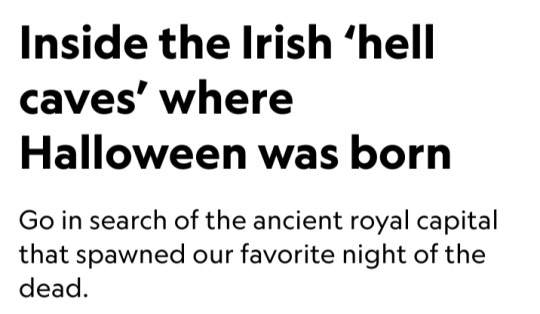

Story and photographs by Ronan O’Connell
September 26, 2023
In the middle of a field in a lesser known part of Ireland is a large mound where sheep wander and graze freely.
Had they been in that same location centuries ago, these animals might have been stiff with terror, held aloft by chanting, costumed celebrants while being sacrificed to demonic spirits that were said to inhabit nearby Oweynagat cave.
This monumental mound lay at the heart of Rathcroghan, the hub of the ancient Irish kingdom of Connaught.
The former Iron Age center is now largely buried beneath the farmland of County Roscommon.
In 2021, Ireland applied for UNESCO World Heritage status for Rathcroghan (Rath-craw-hin). It remains on the organization's tentative list.

Rooted in lore
Spread across more than two square miles of rich agricultural land, Rathcroghan encompasses 240 archaeological sites, dating back 5,500 years.
They include burial mounds, ring forts (settlement sites), standing stones, linear earthworks, an Iron Age ritual sanctuary — and Oweynagat, the so-called gate to hell.
More than 2,000 years ago, when Ireland’s communities seem to have worshipped nature and the land itself, it was here at Rathcroghan that the Irish New Year festival of Samhain (SOW-in) was born, says archaeologist and Rathcroghan expert Daniel Curley.
In the 1800s, the Samhain tradition was brought by Irish immigrants to the United States, where it morphed into the sugar overload that is American Halloween.
Dorothy Ann Bray, a retired associate professor at McGill University and an expert in Irish folklore, explains that pre-Christian Irish divided each year into summer and winter.
Within that framework were four festivities.
Imbolc, on February 1, was a festival that coincided with lambing season.
Bealtaine, on May 1, marked the end of winter and involved customs like washing one’s face in dew, plucking the first blooming flowers, and dancing around a decorated tree.
August 1 heralded Lughnasadh, a harvest festival dedicated to the god Lugh and presided over by Irish kings.
Then on October 31 came Samhain, when one pastoral year ended and another began.
Rathcroghan was not a town, as Connaught had no proper urban centers and consisted of scattered rural properties.
Instead, it was a royal settlement and a key venue for these festivals.
During Samhain, in particular, Rathcroghan was a hive of activity focused on its elevated temple, which was surrounded by burial grounds for the Connachta elite.
Those same privileged people may have lived at Rathcroghan. The remaining lower-class Connachta communities resided in dispersed farms and descended on the site only for festivals.
At those lively events they traded, feasted, exchanged gifts, played games, arranged marriages, and announced declarations of war or peace.
Festivalgoers also may have made ritual offerings, possibly directed to the spirits of Ireland’s otherworld.
That murky, subterranean dimension, also known as Tír na nÓg (Teer-na-nohg), was inhabited by Ireland’s immortals, as well as a myriad of beasts, demons, and monsters.
During Samhain, some of these creatures escaped via Oweynagat cave (pronounced “Oen-na-gat” and meaning “cave of the cats”).
“Samhain was when the invisible wall between the living world and the otherworld disappeared,” says Mike McCarthy, a Rathcroghan tour guide and researcher who has co-authored several publications on the site.
“A whole host of fearsome otherworldly beasts emerged to ravage the surrounding landscape and make it ready for winter.”
Thankful for the agricultural efforts of these spirits but wary of falling victim to their fury, the people protected themselves from physical harm by lighting ritual fires on hilltops and in fields.
They disguised themselves as fellow ghouls, McCarthy says, so as not to be dragged into the otherworld via the cave.
Despite these engaging legends — and the extensive archaeological site in which they dwell — one easily could drive past Rathcroghan and spot nothing but paddocks.
Inhabited for more than 10,000 years, Ireland is so dense with historical remains that many are either largely or entirely unnoticed.
Some are hidden beneath the ground, having been abandoned centuries ago and then slowly consumed by nature.
That includes Rathcroghan, which some experts say may be Europe’s largest unexcavated royal complex.
Not only has it never been dug up, but it also predates Ireland’s written history.
That means scientists must piece together its tale using non-invasive technology and artifacts found in its vicinity.
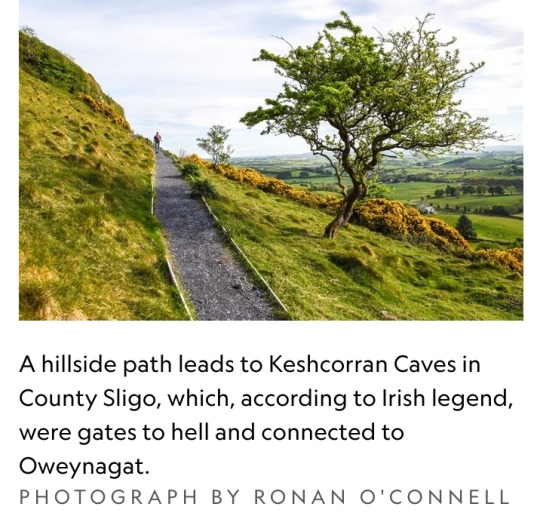
While Irish people for centuries knew this site was home to Rathcroghan, it wasn’t until the 1990s that a team of Irish researchers used remote sensing technology to reveal its archaeological secrets beneath the ground.
“The beauty of the approach to date at Rathcroghan is that so much has been uncovered without the destruction that comes with excavating upstanding earthwork monuments,” Curley says.
“[Now] targeted excavation can be engaged with, which will answer our research questions while limiting the damage inherent with excavation.”
Becoming a UNESCO site
This policy of preserving Rathcroghan’s integrity and authenticity extends to tourism.
Despite its significance, Rathcroghan is one of Ireland’s less frequented attractions, drawing some 22,000 visitors a year compared with more than a million at the Cliffs of Moher.
That may not be the case had it long ago been heavily marketed as the “Birthplace of Halloween,” Curley says.
But there is no Halloween signage at Rathcroghan or in Tulsk, the nearest town.
Rathcroghan’s renown should soar, however, if Ireland is successful in its push to make it a UNESCO World Heritage site.
The Irish Government has included Rathcroghan as part of the “Royal Sites of Ireland,” which is on its newest list of locations to be considered for prized World Heritage status.
The global exposure potentially offered by UNESCO branding would likely attract many more visitors to Rathcroghan.
But it seems unlikely this historic jewel will be re-packaged as a kitschy Halloween tourist attraction.
“If Rathcroghan got a UNESCO listing and that attracted more attention here that would be great, because it might result in more funding to look after the site,” Curley says.
“But we want sustainable tourism, not a rush of gimmicky Halloween tourism.”
Those travelers who do seek out Rathcroghan might have trouble finding Oweynagat cave.
Oweynagat is elusive — despite being the birthplace of Medb, perhaps the most famous queen in Irish history, 2,000 years ago.
Barely signposted, it’s hidden beneath trees in a paddock at the end of a one-way, dead-end farm track, about a thousand yards south of the much more accessible temple mound.
Visitors are free to hop a fence, walk through a field, and peer into the narrow passage of Oweynagat.
In Ireland’s Iron Age, such behavior would have been enormously risky during Samhain, when even wearing a ghastly disguise might not have spared the wrath of a malevolent creature.
Two millennia later, most costumed trick-or-treaters on Halloween won’t realize they’re mimicking a prehistoric tradition — one with much higher stakes than the pursuit of candy.
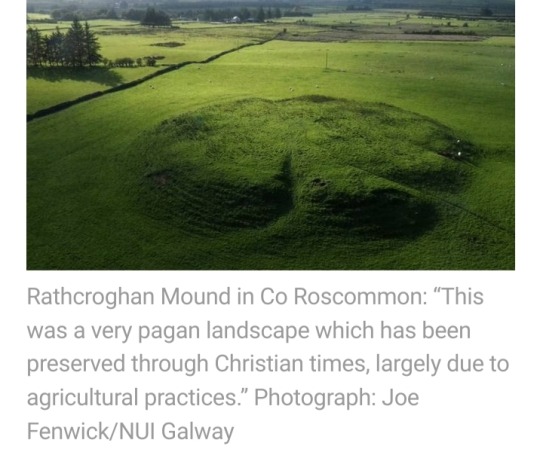
#Rathcroghan#Connaught#County Roscommon#UNESCO World Heritage#Samhain#Imbolc#Bealtaine#Lughnasadh#Tír na nÓg#Oweynagat cave#Ireland#remote sensing technology#Birthplace of Halloween#Halloween#Royal Sites of Ireland#Halloween tourism#Medb#Oweynagat#Iron Age#Irish history#archaeological site
84 notes
·
View notes
Text
Our rose bush is in full bloom and Bealtaine/the Floralia is right around the corner and you all know what that means! Time to toss some in a Mason jar with fresh strawberries and wine.
Honestly infusions like this are such an easy way to make a cheap wine feel fancy and I absolutely 100% recommend trying it if you haven't.
#making an effort to use seasonal produce in all my holy day feasts this year#bealtaine#beltane#floralia#irish paganism#irish polytheism#religio romana#roman paganism#queer pagans#queer witch#garden witchery#green witchcraft#kitchen witchcraft#mine#recipe
123 notes
·
View notes
Text

Bealtaine | Watercolour
I was lamenting the fact that I had intended to make a Bealtaine piece to accompany my Imbolg hare but didn't get 'round to it before the day... so no time like the present! Blessed Bealtaine to you <3
#my art#bealtaine#irish rabbit#rabbit#bunny#watercolour#watercolor#may#first of summer#folklore#mythology#ireland#Irish#gorse#fire#leaping#animal art#illustration
71 notes
·
View notes
Text

Happy Beltane, darlings! 🌸🌿🔥
As we approach the peak of spring, it's time to celebrate the beauty and fertility of the season. Beltane is the perfect time to connect with nature, honor the earth, and indulge in some whimsical fun. Here are some correspondences and ideas for how to celebrate:
♥️ Symbols
Maypole, flowers and flower crowns, bonfires, ribbons.
🌈 Colors
Green, pink, white, yellow, red.
🔮 Spells
Fertility, love, creativity, abundance, growth.
💎 Crystals
Rose quartz, carnelian, green aventurine.
🌸 Herbs and flowers
Lavender, dandelion, chamomile, lilac.
🍞 Foods
Honey cake, fresh salads, fruit and nuts, homemade bread.
🥂 How to celebrate
Dance around the maypole, have a picnic in nature, decorate with flowers, create a Beltane altar, light a bonfire, make love, practice divination.
Remember, Beltane is a time of joy, abundance, and growth. Embrace the season and connect with the earth. Happy Beltane! 🌸🌿🔥
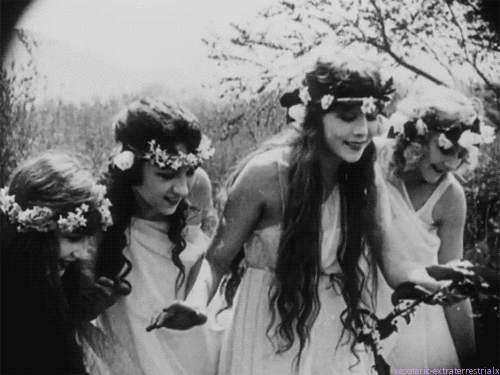
____
🌞 If you enjoy my posts, please consider donating to my energies 🌞
✨🔮 Request a Tarot Reading Here 🔮✨
____
With love, from a Sappy Witch 🔮💕
Blessed be. 🕊✨
#beltane#bealtaine#mayday#witchythings#moon#witchcraft#witchaesthetic#witch aesthetic#witchcommunity#witch community#witchcraftcommunity#witchesoftumblr#magick#pagan#spring#wheeloftheyear#maypole#mine#baby witch tip#sappywitch#sappywitchcoven#blessedbe
42 notes
·
View notes
Text

🔥Beltane 🔥
#witchblr#witchcraft#altarspace#wheel of the year#bealtaine#beltane#cernunnos#oracle cards#mayday#maypole#deerskull#candles#candle light#lanternslight
44 notes
·
View notes
Text

Blessed Beltane/Bealtaine 🌿
The land is speaking in beauty and I wish to only listen.
#beltane#bealtaine#blessed be#paganism#paganblr#pagan#druid#druidry#obod#beauty of nature#nature#gardencore#naturecore#grandmacore#adventurecore#bardcore#fantasycore#cottagecore#wandercore#flowercore#fairycore#flower photography#nature photography#woodland#forestcore#witchblr#green witch#celtic
278 notes
·
View notes
Text
Bealtaine Customs
Bealtaine is almost here!
Bealtaine (bee-YAL-tin-eh) is the ancient Irish fire festival that starts the night of April 30th- Oíche Bealtaine- and is celebrated May 1- Lá Bealtaine (though festivities can last longer). Bealtaine marks the beginning of summer. In modern Irish Catholic tradition, May is celebrated as the month of the Blessed Virgin Mary.
These quatations are all pulled from the dúchas.ie folklore collection. To learn more, go to https://duchas.ie
Significance of Fire

The ashes was never put out on May Day long ago.
-Mrs. French, Co. Mayo
A central theme of Bealtaine is fire, as it is with all the Irish fire festivals. On the eve of the holiday, all fires were put out. A central fire was lit at the heart of the island, which spread throughout:
On May Eve the Druids lit the great sacred fire at Tara and as the signal flames rose up high in the air and then a fire is to kindled on every hill in Erin; till the whole island is on fire with fires.
-Patrick Healy Co. Galway
A similar tradition has been revived at the Hill of Uisneach.
Having a bonfire and spreading the light from that central point would be a great way to honor the sacredness of fire and celebrate Bealtaine.
Back then, people would also guide their cattle through two bonfires at Bealtaine, to cleanse and bless them for good health and abundance. Speaking of cattle...
Protecting Cattle

The people also tie a piece of red cloth on each cows' tail. This they tie on in the morning before letting them out. They do this to prevent the fairies from taking the cow's milk. Sometimes they tie a horse-shoe-nail or "táirgne crúth" in the cow's tails
-Mrs. Nora Maloney, Co. Mayo
On May Eve now people sprinkle Easter water on all the crops, cattle etc. and on the boundary fence. Perhaps this is apart from it's religious aspect a survival of the old dread of 'pishogues' when people dreaded harm to their crops and cattle.
Long ago the people went out on May morning and blessed the cow with a lighting candle.
-Patrick Lally, Co. Galway
And while we're talking about protection...
Yellow Flowers- Festive Protection
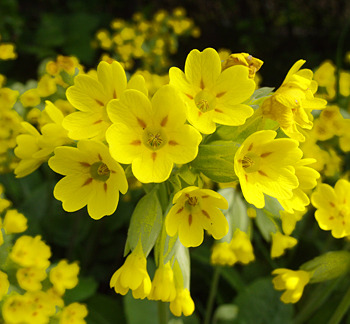

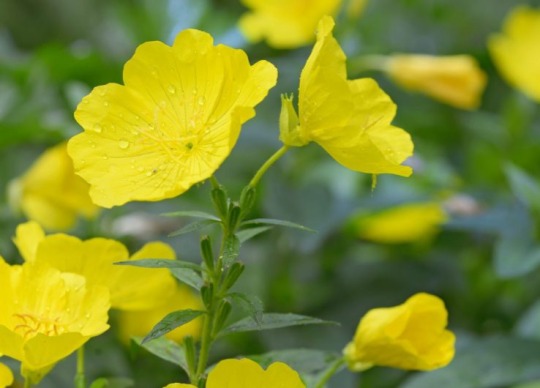
In years gone by the people used to throw a primrose in the byre door so that the fairies would not take away the milk from the cows for the year. It was at May eve that they threw this primrose in the byre door.
-William J Mc Laughlin
It is the custom for children to pick May flowers or Marsh marigolds on the last evening in April. These they throw on the doorstep or on the windowsill.
-Mrs. Norah Maloney, Co. Mayo
The first of May is called May Day or (Lá Bealtaine). On the eve of this feast the children gather may-flowers and place them on the window sills of the houses.
-P. Mc Closkey
"Cow-slips were hung on the door that day to bring good luck for the year."
-Martin Costello, Co. Mayo
Try hanging up yellow flowers at your doors and windowsills for protection and good luck! If don't have any flowers, don't worry. There's another way to welcome in good luck...
May Day Dew

It is also said that if you get up early on that morning and wash your face with the dew on the grass you will be healthy during the year.
-Collected by Anthony Clark
They washed their faces in the dew on May morning before the sun rose and and they would not get sunburned again for the year.
- Mrs. French, Co. Mayo
If a person wanted to preserve their beauty , they would have to get up one hour before sun-rise and wash their face in dew off the grass on May morning.
-Collected by Amy Gilligan, Co. Mayo
That's all well and good, but there is something more sinister that May morning dew is useful for...
Baneful Butter Stealing
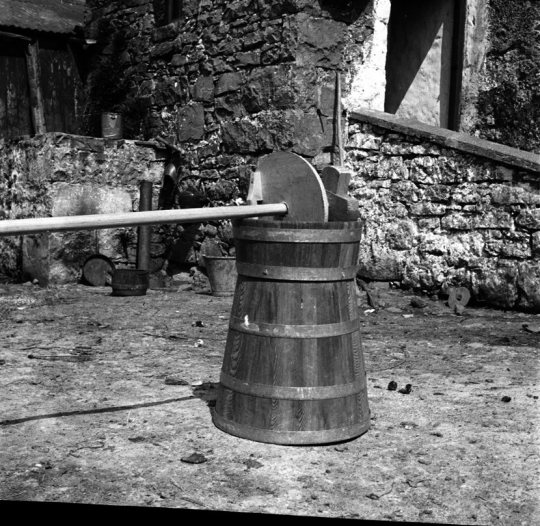
Long ago, on May morning, lots of old woman went out in the morning before the sun arose and swept the dew of the grass by pulling a long rope after them and calling, "Come all to me, come all to me.” This was a kind of witchcraft, taking away butter of other people’s milk.
-Collected by Rudy Stronge, Co. Donegal
It is also believed if one goes out early and milks the neighbour's cow, they will be able to get all the butter from that cow's milk so they will have double the supply while their neighbour will not get any.
Long ago on May morning some people used pull three ribs from the cow's tail and take clay from her hoofs and bring it home. Then that person would have butter from the cows she did this to and the person to whom the cows belonged would have none after churning.
-Michael Costello, Co. Mayo
Some women used get a twig of mountain ash and put it under the churn on May Day and so get all the butter from her neighbours churn, on condition that she said she wanted the butter from her neighbours churn while making her own.
-Mrs. Butler, Co. Mayo
While I don't condone butter theft, Bealtaine seems to be the right time to do it. Let's look at another way to celebrate!
The May Bush


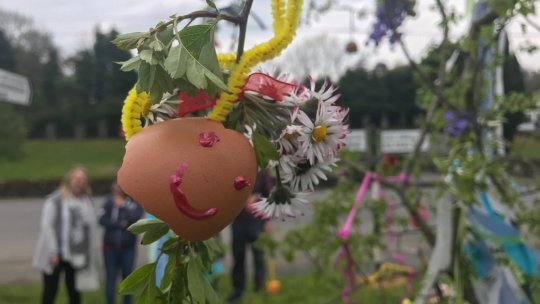
On May day morning, children get a small haw-thorn bush or at least a branch of one on which there is haw-thorn in bloom. On this bush they tie all kinds of coloured ribbons, papers, tinsel or other decorations left after the Xmas decorations till it is a gorgeous sight.
-Collected by Joan Martin
While hawthorn is the traditional tree chosen for the May bush, it's important to remember that the Irish tradition states to never ever bring hawthorn indoors.
This quote's sort of a miscellaneous one, but I thought it was interesting.
On May Night long ago the people used to leave a cake and a jug of milk on the table because they thought the Irish who were buried in America and other countries used come home on that night and visit their own home. Another old custom was to leave the doors unlocked that night. They considered it unlucky to give butter or milk way to any person on May Day as they would be giving away their luck. No stables were to be cleaned out on that day. The first person to go to the well in the morning was supposed to have luck for the rest of the year. It is not right to give money to anyone on that day. But if you get money on that day you will be getting it for the year."
-Mrs. Joyce, Co. Mayo
Ah, can't forget the ancestors. Or the diaspora! ;)
An incredibly common tradition I saw while scrolling through dúchas (I really recommend you do it yourself! They have everything!) was that milk, coals, salt, money, or really anything isn't to be given away at Bealtaine, or you'll lose something for yourself. Something supernatural about Bealtaine surpasses the Irish tradition of hospitality. This to me really highlights a theme of abundance. Welp, that's all I have for now!
🌼☀️Beannachtaí na Bealtaine oraibh!☀️🌼
#bealtaine#beltane#pagan#witchcraft#witches#irish paganism#folklore#folk witch#paganism#irish folklore#witchyvibes#pagan witch#witch community#witch tips#witchcraft 101#folk magic#wheel of the year
287 notes
·
View notes
Text

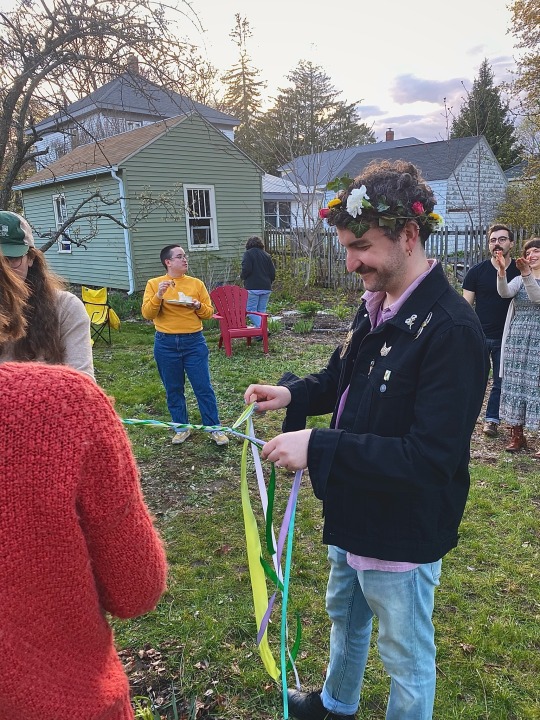

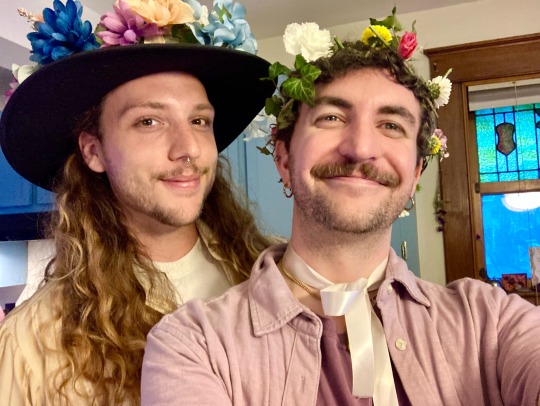

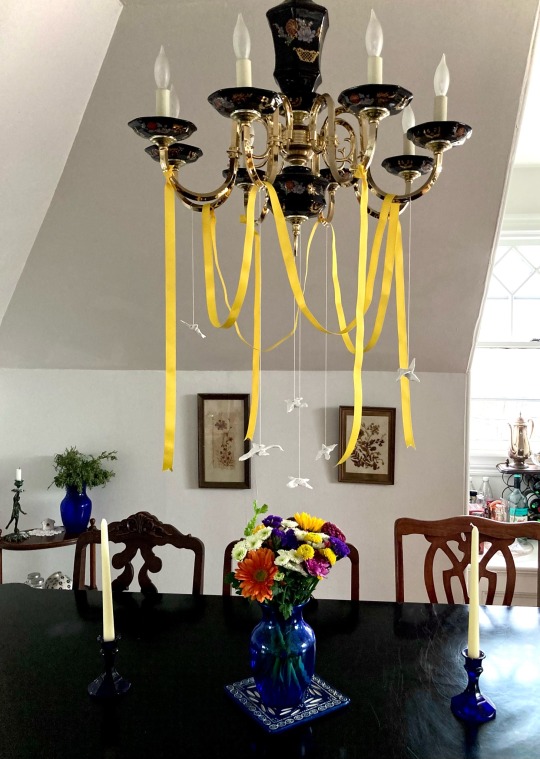

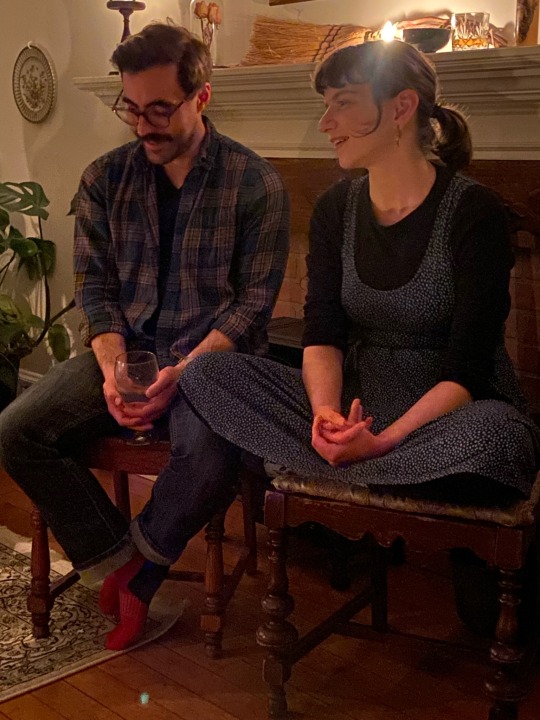

Full of butter, sweet songs, and firelight.
🌼
Feasts, poetry, dance, pre-dawn rambles, and no small amount of ribbon marked the start of old summer - though you wouldn't know it in Maine!
I feel so warm watching our festival group building every year. These folks are showing up in a big way with flowers, goodies, and stories to boot.
We were rained in, so our bon(e)fire took the form of a big candle, but the atmosphere of it anchored us almost as well.
𝐹𝑜𝓇 𝓈𝓊𝓂𝓂𝑒𝓇 𝒾𝓈 𝒶 𝒸𝑜𝓂𝒾𝓃𝑔 𝒾𝓃
𝒜𝓃𝒹 𝓌𝒾𝓃𝓉𝑒𝓇'𝓈 𝑔𝑜𝓃𝑒 𝒶𝓌𝒶𝓎-𝑜!
#Bealtaine#May Day#Beltane#Irish#English#folklore#festival#folk magic#polytheism#tradition#personal#yours truly#me#May Eve
23 notes
·
View notes
Text
Important Facts about Bealtaine from an Irish Celtic Reconstructionist
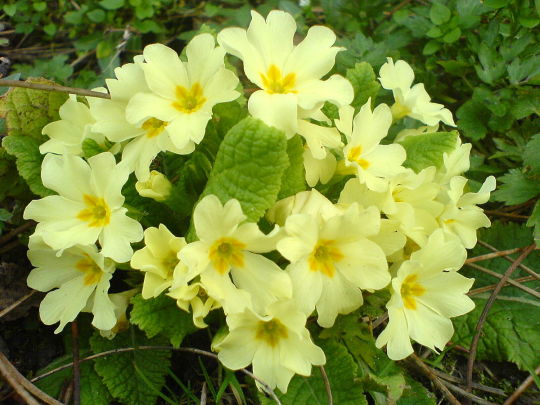

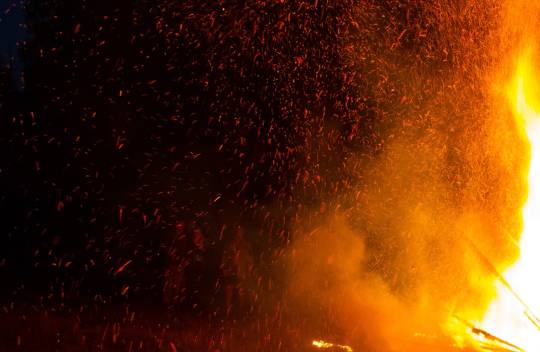
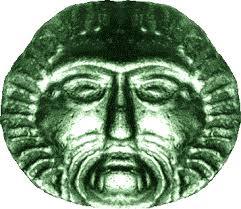
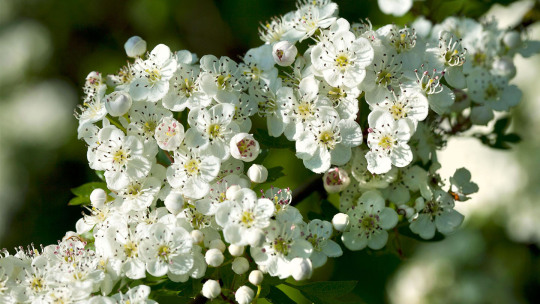
Spelling and Pronunciation
OI. Bealtaine (Bell-tin-Na) has more recently been written as I. Beltaine or Anglicized Beltane (Bell-tain). In the Cormac Glossary it is said to derive from the deity Bel and OI. 'Tene' meaning fire.
Dates
Most Reconstructionists celebrate Bealtaine on April 30th-May 1st, sundown to sundown. Iron age Irish (and other Celts) structured their days from sunset to sunset so while we now track this time as stretching over two days, they would have seen this period as one single day, being the first day of the month of May by the Gregorian calendar. Some Reconsructionists might prefer to celebrate by the Julian calendar which would place this holiday on May 13th-14th (by the Gregorian calendar), still of course from sundown to sundown. In the most traditional sense this holiday would have been celebrated when the livestock was moved from the winter grazing fields out to the summer grazing fields.
Importance in Mythos
Most mythological reference to this holiday comes in the form of the movement of peoples or invasions of peoples.
The mythological invasion of Partholon and his people occurred on Bealtaine and the plague that wiped them out also began on that date and lasted a week. The Tuath De Danann are said to have arrived on the island on Bealtine as well and lastly the Sons of Mil are said to have invaded on this date also (Macalister, 1940).
In later times when Christianity had made its mythologies the way of the land and the old deities were moved to the status of Fae this idea of movement and invasion seems to have persisted. Traditions hold that this date is a dangerous time for mortals as the aes sídhe are moving amongst the daoine sí and may stop by unsuspecting homes to ask for butter or perhaps some water, but if this request is granted they will steal the homes luck for the year.
I will make a note here that while the Cormac Glossary notes the deity Bel there is no Celtic/Gaelic deity of this name (though there is a Mesopotamian one) and this seems to cause a lot of confusion, especially when it comes to Wiccancentic ideas and articles. Cormac was likely referring to the Celtic/Gaelic deity Belenus NOT the Mesopotamian Bel. Belenus/Belenos was associated with the sun and healing and during the Gallo-Roman period was often noted to be the Gaelic Apollo. There is evidence to suggest that Belenus/Belenos was known throughout the Celtic/Gaelic world, though we don't have any specific information about how prominently he was worshiped in Ireland itself it is relatively safe to assume that the Iron age Irish would have known who he was.
Celebration Traditions
Like on Samhain, at the opposing 'end' of the year livestock were transitioned from one grazing area to another. While on Samhain, when the 'dark' half of the year begins and the livestock are moved in from summer grazing to winter grazing, Bealtaine is the opposite. It begins the 'light' half of the year and livestock are moved from the winter grazing out to the summer pastures. At both holidays to ensure healthy animals and protect them from any malicious factors great bonfires were built (most notably on the hill of Uisneach) and livestock would be driven between them.
There seems to be a traditional emphasis on the protection of homes, barns, livestock, peoples, and crops. Generally this seems to be a time when warding against ill luck for the community became a focus. Yellow, specifically yellow flowers (primrose, gorse or hawthorn blossoms), appear to have played a role in this as they have been used to decorate, but when exactly this tradition originated is unknown. The healing wells of Ireland and specifically the dew on the morning of Bealtaine have been thought to be important. Some traditions hold that the dew, when washed with will bring beauty, while others think if drank by the milk cows it would cause them to produce more, but again the origins of these traditions are relatively unknown.
Interesting History to take into Consideration
Given Bealtines long lasting history in Irish mythological tradition of being associated with mass movements of peoples and a need to protect ones family and community in this tumultuous time it is -possible- these ideas persist due to the movements (and possibly famines or plagues) during the "Megadrought" of the Bronze age (1250-1100 BCE). Most studies have focused on the effects of the Mediterranean at this time, but it is reasonable to assume the ripples of effects could have been felt strongly enough in Ireland to leave a lasting impression, especially since it is not outlandish to assume that people fleeing the Mediterranean area, which was no longer able to adequately sustain them, may have fled to the more temperate British Isles and passed on their trauma through oral tradition. This could possibly be backed up by looking at the etymology of 'Bel' not as referencing Beleus/Beleos but as referencing the Irish Balor (or perhaps they are different aspects of the same figure) who embodies not the life sustaining properties of the sun but the deadly and destructive ones. Balor balcbéimnech, 'Balor the strong smiter,' Balor birugerc, ' Balor of the piercing eye,' Balor mae Doit meic Néid, 'Balor son of Dot son of Néit.'
This is obviously only my personal opinion and can be taken or dismissed as one likes.
#celtic mythology#celtic reconstructionism#celtic paganism#celtic reconstructionist#celtic#Irish#irish mythology#irish reconstructionist#irish reconstructionism#irish paganism#beltaine#Bealtaine#Beltane#festival#fire festival#blackcrowing
219 notes
·
View notes
